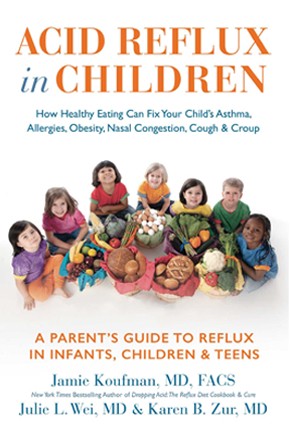
Reflux-Testing for Respiratory Reflux (LPR) Is a Waste of Time and Money
At-A-Glance
- Of the currently available reflux-testing technologies ― upper endoscopy, Impedance, Bravo, esophageal pH-monitoring, manometry, Restech ― none are remotely accurate for diagnosing respiratory reflux (LPR).
- To diagnose respiratory reflux, a high-quality pH (acid) measuring device must be placed in the throat; and again, none of today’s available testing methods do that.
- In my opinion, gastroenterologists have no tests or treatments for respiratory reflux, so if you have it, don’t bother to see a gastroenterologist. A better choice is an otolaryngologist (ENT) who is capable of examining the throat. But note the ENT reflux diagnostic, Restech, is also worthless, wrong two-thirds of the time.
- Alternatively, see your primary care physician.u003c/liu003ern tu003cliu003eIn part, Medicare (with GI influence), is responsible for the demise of quality reflux-testing, which I did in my practice. Today, Medicare physician reimbursement for pH monitoring is $119, and for most physicians they would lose money, so they don’t do it
- This article is in part an excerpt from Dr. Koufman’s up-coming book, u003c/emu003e“Respiratory Reflux: How Silent Reflux Causes Disease,” due to be released in late 2023 or early 2024
Note: Respiratory Reflux (RR) and Laryngopharyngeal Reflux (LPR) are synonyms and the terms can be used interchangeably. Going forward, I prefer the term RR and so should you; it is easier to pronounce, more intuitive, more comprehensive, and implies that RR can affect any and all parts of the respiratory system, which it does.
Most of what I have to say about contemporary reflux testing, at least my conclusions, is in the above At-a-Glance. That said, the evolution of reflux testing was in my hands for forty years, until 2020. In 1981, I got the idea that we could do pH monitoring in the pharynx (throat) and esophagus, which meant that one pH sensor could be put in the esophagus like the GIs were already doing with a second sensor being placed in the pharynx … both at the same time.
I have had custom double-probe pH catheters made for me since I started doing ambulatory 24-hour double-probe (simultaneous esophageal and pharyngeal) pH monitoring; and this was the state of the art until recently. (BTW, there may be a handful of centers still doing this, but none that I know of.) Two problems made my kind of reflux testing “obsolete” even though it provided the most reliable data. When I was forced to retire, the pH probe company stopped making quality custom double pH probes and Medicare reimbursement dropped to a level that made my kind of reflux testing a money-looser.
Why Are Current Reflux Tests Bogus?
The Bravo Test places a capsule in the (usually lower) esophagus, and it provides no data about the pharynx. I used Impedance Testing with a pharyngeal pH sensor for three years and found it to be inaccurate when it comes to respiratory reflux. Furthermore, the arbitrary definition of acid as being pH 4.0 or less is wrong and makes “non-acid reflux” the usual but incorrect interpretation. The problem is that there is damage in the airway at much higher pH level, and it is still acid up to pH 6.9. Finally, using pH monitoring, we identified a group of patients who had reflux all night long, so-called “puddle pattern”; and impedance missed this most of the time. I used Impedance exclusively for three years in the mid-2020s, along with pH monitoring. Selected patients wore Impedance and pH equipment both at the same time. In a word, the pH data was almost always more accurate.
A word about upper endoscopy; it is not how reflux is diagnosed; it is an examination for esophageal pathology. If it is normal, you still may have reflux … and you usually don’t need it repeated, and if it is abnormal, reexamination should be in 1-2 years at most. In addition, sedated endoscopy by a GI has a significant mortality usually due to complications of the anesthesia. TNE is a better screening tool, but the GIs basically killed it in 2014; Medicare didn’t help. Physician reimbursement for TNE is currently $84.
Then there is manometry. We use it to determine accurate placement of pH probes by finding the esophageal valves; it also does give information about esophageal and esophageal valve function. For the layman, “dysmotility” means lazy esophagus … with swallows failing. Thing is, abnormal motility in a refluxer is pretty meaningless, as most are abnormal; however, manometry almost always returns to normal when the reflux is treated. In other words, abnormal manometry is almost always caused by reflux. That said, manometry of the upper esophageal sphincter is useful in the diagnosis of globus (a sensation of a lump in the throat) that also goes away after effective reflux treatment..
Restech is a technology that was supposedly designed to detect respiratory reflux; however, they company has been changing the interpretation criteria repeatedly over the years, and currently normal is pH 6.5-8.0? I reviewed a series of Restech results and found that almost none met real reflux criteria of pH <5. In addition, two-out-of-three Restech tests were just wrong; I think this technology is useless.
Peptest is a test that I developed thirty years ago. I thought that if we identified pepsin (the prevalent stomach enzyme) in saliva, that that would prove respiratory reflux. I patented the idea in 1999 (U.S. patent 5,879,897). When the patent ran out (actually well before), and ex-employee of mine, Peter Dettmar, ran with it, establishing a company. Why didn’t I do that? Unfortunately, a single spit sample sent through the mail or even done on the spot tells you nothing whether positive or negative. In addition to having chemical degradation of pepsin over time in the mail, a healthy person can be positive and a refluxer can be negative. The pepsin assay is only useful as a research tool, but even so, we systematically studied asthmatics, for example, and the data were disappointing. I do not recommend that you do the Peptest as the result is at best confusing.
With Questionable Diagnostics, What’s a Refluxer to Do?
If you have GERD, go see a GI; but if you have respiratory reflux? You’re the Doctor!
Since the “go-to” doctor for reflux, the GI, knows nothing about respiratory reflux, why should other specialists, e.g., allergists, otolaryngologists, pulmonologists, know more? It is in none of their curricula. Your doctor may or may not know anything about respiratory reflux although it may affect millions of Americans; see Silent Reflux, Respiratory Reflux, and LPR v GERD.
As I have said before many times, reflux is not a medical disease in that there is a treatment that can stop it; the only cure is healthy diet and lifestyle. Educate yourself. My blog was written for you. Dig deep into it. If you read most of the articles, with two weeks, you will know more about reflux than 90% of the physicians in America.
Parting Shot: Is Any Reflux Test Helpful?
As reflux tests go, after I developed pharyngeal reflux testing, I abandoned the barium swallow/esophagram, a radiologic (x-ray) test in which you swallow barium (seen on x-ray) while they record what happens. However, with the disappearance of pharyngeal pH monitoring, the barium swallow/esophagram may be the best test for evaluating respiratory reflux and it is non-invasive.
You can ask your primary care physician to order a: barium swallow/esophagram upright (standing) and supine (lying down). It provides information about where reflux goes as well as information about esophageal and esophageal valve function. It believe that it gives more information than any GI test.
I also have books on reflux that may help you: Dropping Acid: The Reflux Diet & Cure and Dr. Koufman’s Acid Reflux Diet. And if you would like to schedule a virtual consultation with me, you can book an appointment online.










